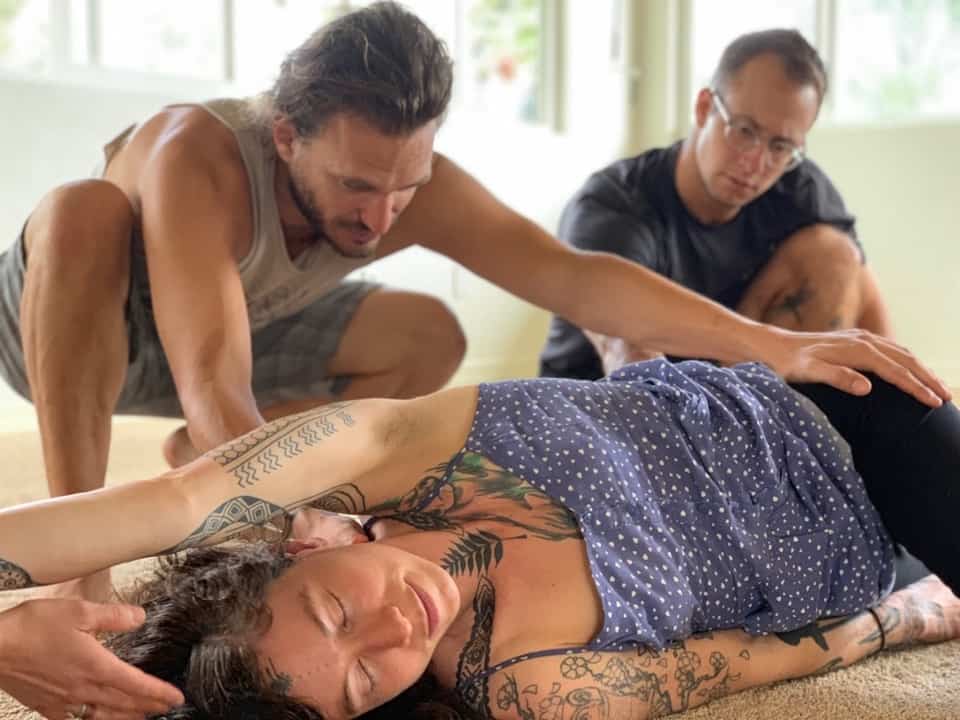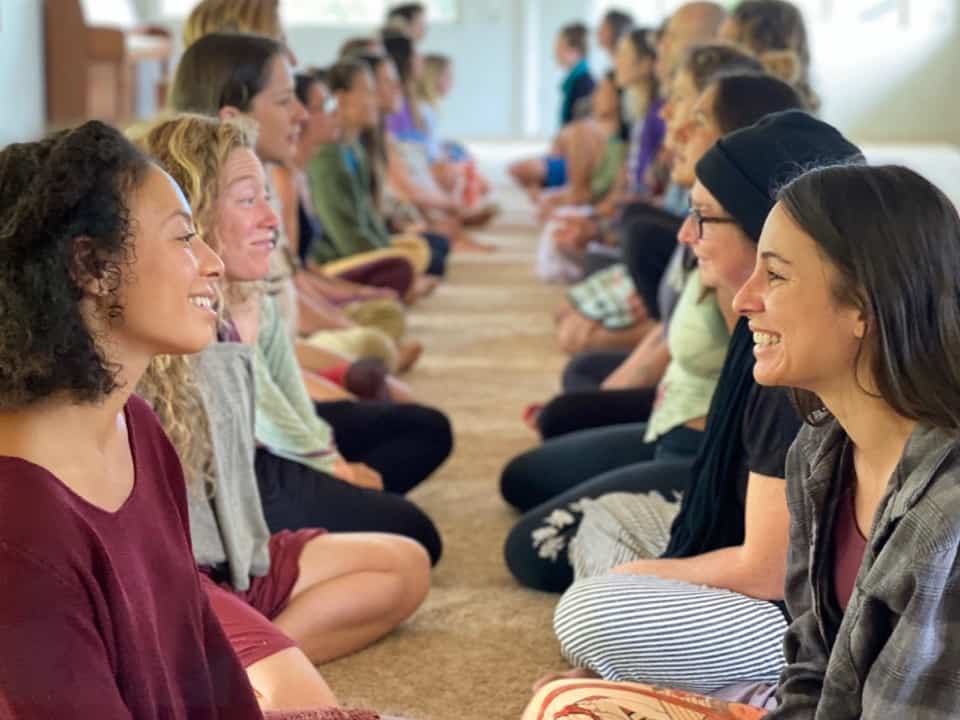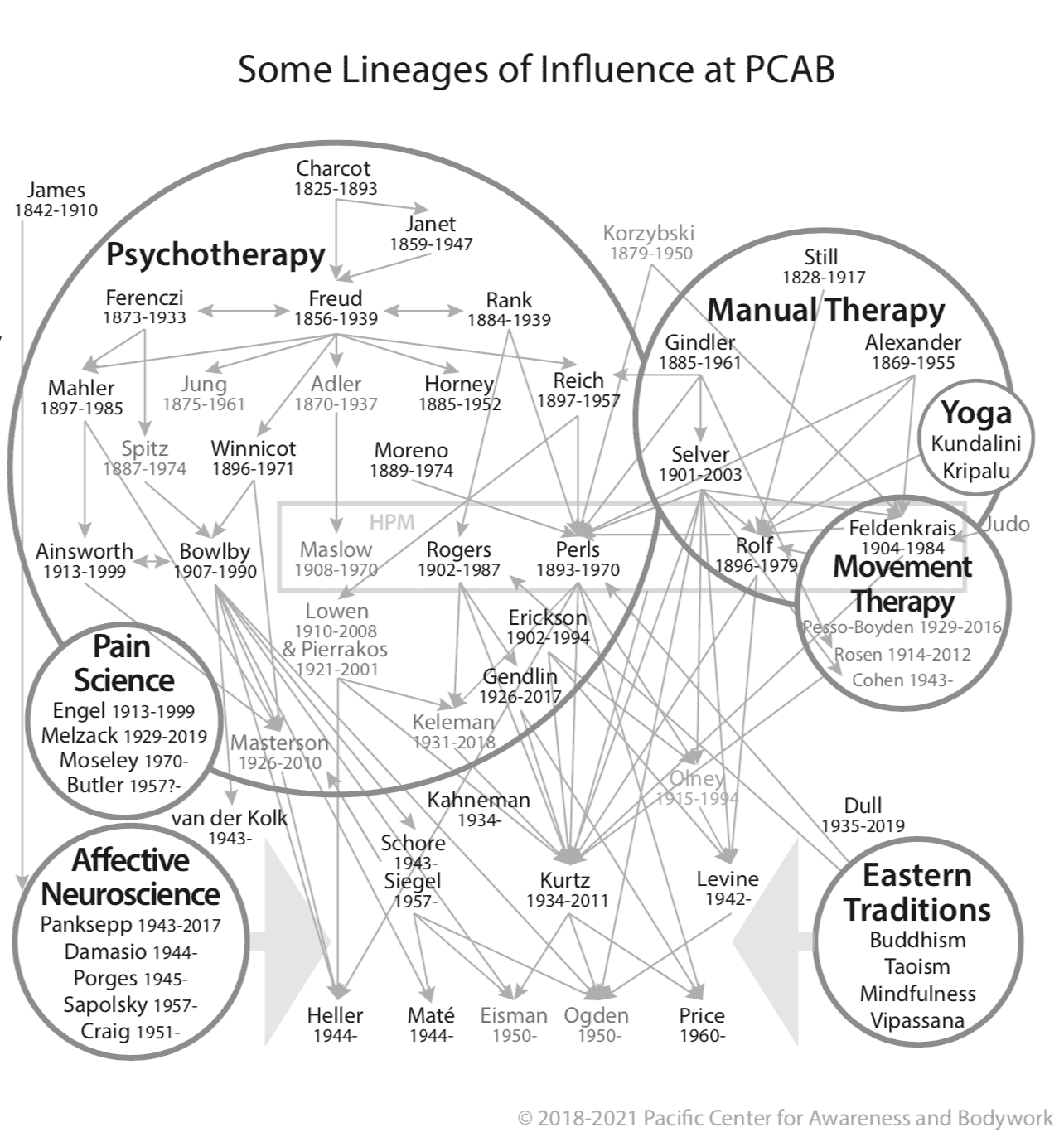For most people, bodywork is about working on bodies, and muscles in particular. And this is a peculiar thing, because if one asks the same people what their main reason for getting a massage is, the #1 answer is to relax or reduce stress, and their #2 answer is to relieve pain. Relaxation, or stress reduction, is much more about the mind than it is the body, and while pain is a very complex topic, it, too, is also much more about the nervous system than it is about muscles.
Clearly bodywork has relevance far beyond the body and bleeds over into the realm of psychology whether it wants to or not. In many bodywork sessions, clients find that emotions arise during the session that don’t normally arise outside of a bodywork session, and most clients leave a session with a feeling that isn’t fully captured by the word ‘relaxed’ but more often is better captured by a word such as ‘aliveness’ or ’embodiment’. At PCAB, we think the feeling of aliveness or embodiment is a good thing to have more of.
Ultimately, massage is being undersold when it’s thought of only in terms of muscles, because touch is an extremely powerful thing for humans, and all mammals–far more powerful than smell, taste, sight, or hearing. For instance, human infants will die without touch, even if their food and water needs are met, and the amount of early neural development is directly related to how much touch is received beyond the minimum required for feeding. Touch plays a huge role in the short and long-term health of premature infants, and the amount of and type of touch received during childhood sets the stage for an entire lifetime of physical and mental health conditions, the understanding of which is very much the realm of psychotherapy and psychoneuroimmunology.
There are many branches on the psychotherapy tree. One of those branches is somatic psychotherapy, which contends that the mind and body are not separable and that to understand thoughts, feelings, and behavior, one must understand the body’s inextricable role in these phenomena. How do the body and mind affect one another? Why does one person panic in a situation where another does not, and what kind of touch has what kinds of effects, and why? What does it mean to feel good or feel happy, and what gets in the way of this? These are all questions within the three realms of somatic psychology, affective neuroscience, and contemplative practice.
At PCAB, we integrate insights from these three realms into our massage therapy program for a number of reasons. First, while one can be an effective massage therapist without this integration, the depth of appreciation for what is happening beneath our fingertips becomes far more profound with this integration. Second, integrating the insights and skills from these fields makes a massage therapist a better human being and (therefore) a better massage therapist. Third, if a massage therapist doesn’t understand how emotions work and why they come up, s/he cannot optimally work with a client who is having emotions arise during a session. Lastly, the additional insights allow the therapist to provide the client with a much more powerful experience while still remaining within the massage therapy scope of practice.
The Practitioner Cultivation and Relational Skills training at PCAB is an experiential co-exploration of psychology and communication that consists of a diverse blend of principles and techniques gleaned from somatic psychology, humanistic/transpersonal psychology, affective neuroscience, and vipassana/mindfulness meditation. Common themes that run through this portion of the course include direct experience of bodily sensations (interoception), presence of aware being, and the opportunity of living from these in the present moment. All methods are non-judgmental, non-directive, non-regressive, client-centered, client-empowering, and client-resourcing. In addition, while our approach is non-regressive (not diving into the past), by rooting in present experience we also very intentionally avoid promoting spiritual bypass, which is an all-too-common psychologically-dissociative practice that readily emerges within all religious and healing traditions of using spiritual beliefs, good feelings, pretty symbols, and “nice” language to avoid deeper pains and wounds.
We integrate components of these techniques into the entire program with the intent of developing relational skills as a massage therapist. Many derive great personal benefit from these techniques as a client and report that this was the most valuable part of the program for them. These personal benefits makes one a better listener, which will make one a better massage therapy practitioner and is useful for creating more peace and ease in any relationship, whether it’s with family, partners, children, friends, colleagues, co-workers, strangers….or yourself.
The first set of tools that we emphasize are focused on the personal level, which concerns the significant events of one’s life, one’s emotional relationship to those events, one’s beliefs and attitudes, and the behavioral and cognitive patterns that one has developed in an attempt to bring about the most wellbeing for oneself. For many, this level involves unexpressed, and therefore unresolved, traumas, as well as beliefs about ourselves. PCAB offers a unique setting that’s safe enough to allow for true exploration. We endeavor to co-create a safe space to allow for the significant events to be expressed while also getting to the heart of the matter.
Secondly, we add interpersonal tools, such as NVC, to focus on the development of communication skills to help with enhancing compassion in social contexts. These tools assist both in helping to enhance a compassionate approach towards others and in altering speech patterns so that they are less likely to create defensiveness and more likely to create empathy in the listener and harmony in the relationship.
Lastly, we move our attention towards the transpersonal level, to bring awareness towards the part of oneself that is okay with whatever is present, including one’s own emotional responses of fear, anger, or anxiety, as well as pleasantness, joy, and love. At this level, our personal story and our interpersonal struggles lose their grip, revealing a place of deep stillness, clarity, and/or vibrant aliveness.
While none of these valuable techniques are necessary for acquiring a massage therapy license, we teach them and integrate them throughout the entire program because we believe that their use makes for more effective bodyworkers and, more importantly, more compassionate and joyful people who can more fully experience their own aliveness and authenticity.
See also our page on Trauma-informed bodywork.
Somatic Psychology History
Somatic Psychology is generally thought to have its beginnings with Freud, or his student Wilhelm Reich. See the graphic below for an overview of the most well-known individuals and approaches over the last century that have varying levels of relevance to our massage therapy program.
Many prominent individuals in Somatic Psychology are not listed here. Some techniques utilized at PCAB may be similar to or may contain elements derived from the practices and people listed on this page, though what our program offers not constitute formal training in any of these.



